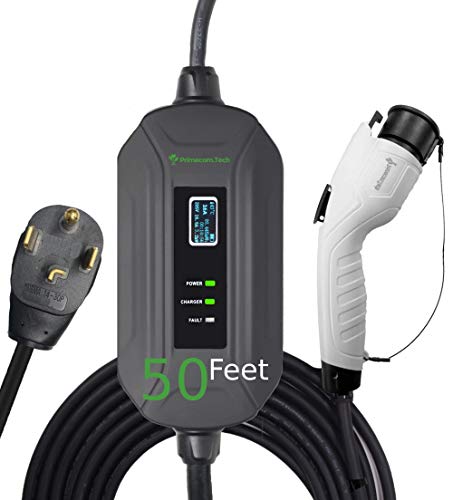I recently moved from Orange County to San Diego and the buyers of my old house didn't want my Leviton 40amp EVSE. When I bought my RAV4, I used the Toyota recommended process, electrician, and charger, and my EVSE was hardwired into my house's electrical system on its own 50amp curcuit.
When I moved to San Diego, I decided that instead of paying an electrician to wire my car charger into the new house, I would instead pay to have a 220V receptacle installed on the exterior of my house. Without doing proper research, I asked the electrician installing PV panels on my house to wire up an external 220V RV connector. He asked if I wanted 50Amps, and I said yes, because the Leviton charger needs a 50amp circuit. This is the connector he installed: http://www.homedepot.com/p/GE-50-Amp-Temporary-RV-Power-Outlet-U054P/100193650
Well, I unpacked my EVSE from its box in the garage and was surprised to find that it only has three wires (red, black, green) inside. The outlet I have has four connectors which I believe are 1xGround, 1xCommon, 2xHot.
So, does anyone have any suggestions to fix this mistake? I'm feeling a bit of the idiot right now for not doing enough research on this, so any suggestions are appreciated.
Thanks in advance,
-Chris
When I moved to San Diego, I decided that instead of paying an electrician to wire my car charger into the new house, I would instead pay to have a 220V receptacle installed on the exterior of my house. Without doing proper research, I asked the electrician installing PV panels on my house to wire up an external 220V RV connector. He asked if I wanted 50Amps, and I said yes, because the Leviton charger needs a 50amp circuit. This is the connector he installed: http://www.homedepot.com/p/GE-50-Amp-Temporary-RV-Power-Outlet-U054P/100193650
Well, I unpacked my EVSE from its box in the garage and was surprised to find that it only has three wires (red, black, green) inside. The outlet I have has four connectors which I believe are 1xGround, 1xCommon, 2xHot.
So, does anyone have any suggestions to fix this mistake? I'm feeling a bit of the idiot right now for not doing enough research on this, so any suggestions are appreciated.
Thanks in advance,
-Chris
























